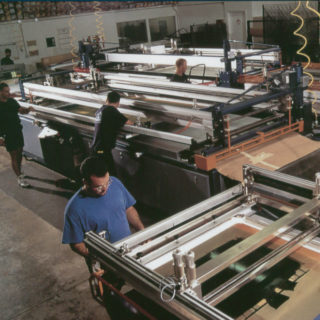So, what is the vehicle graphics process? A friend volunteered as a board member for a not for profit. The charity was considering vehicle graphics for a couple of their transits. During the board meeting, one member asked a good question, “What’s the vehicle graphics process?” Here are the basics.
Artwork
What artwork is acceptable?
“Raster: Created in a pixel-based program, such as Adobe Photoshop. Acceptable file types include .psd, .psb, Photoshop EPS, .tiff, .jpeg, and high-quality PDF. Raster art is an image created through the use of colorized blocks called “pixels.” Raster images should match the resolution of the final output size to prevent pixelation or graininess.
Vector: Created with a vector-based program, such as Adobe Illustrator. Acceptable file types include .ai, .eps, or high quality PDF. In vector art, shapes are made up of mathematical expressions, or vectors, which can be scaled infinitely without affecting the quality of the image.” — Will this Artwork Work?
If you’d like to learn more go to TKO Graphix Art Submission Guidelines.
If you don’t have artwork or are unsure if your artwork meets the submission guidelines TKO’s team of graphic designers with an average tenure of more than ten years can help with the vehicle graphics process.
Production
One of the first considerations is the type of print to be used, screen or digital. “There are advantages and disadvantages to both printing systems. However, many print shops have eliminated screen print, and many newer shops have never used screen print. Even though screen printing seems old-school, there is a time and a place for both processes, and you should have a choice.” — Digital or Screen Print What Should You Use?
Next comes choosing the best materials for your specific vehicle graphics process. There are different adhesive vinyl graphics material designed for varying uses. “Vinyl begins as Poly Vinyl Chloride (PVC), then additives create the vinyl film used to wrap vehicles. Plasticizers are added for flexibility, pigment is added for color.
Then UV absorbers and heat stabilizers are added to create a vinyl that will conform to a vehicle’s shape and withstand the elements. Cast, or “premium vinyl,” is a process similar to making a cake. Ingredients are mixed and solvents are added, and then poured into a casting sheet, which is baked, allowing the solvents to evaporate.
This process makes a very flexible, thin, shrink-resistant material. Another manufacturing option is the calendar or economy process. In this method, ingredients are mixed, but solvents aren’t added. Like pizza dough, the vinyl is rolled and stretched into the desired shape. This material is thicker and having been stretched, it tends to shrink.” — Are There Different Adhesive Vinyl Graphics Materials
Over Lamination
Another consideration is over lamination. “Over lamination of adhesive vinyl graphics protects the design from harmful UV rays, acid dew, and road debris. Laminating the material is recommended by manufacturers, such as 3M in this Graphics solutions post,
“It also provides excellent gloss and clarity of reflection, giving a “wet paint” look. And it is warranted by 3M when used with recommended 3M graphic films, printers and inks – including its performance on horizontal surfaces, offering your customers peace of mind.” — Why Do Vehicle Graphics Fade?
Installation
Time in business, experience of the installation team, and tools all impact the installation of vehicle graphics. But one of the surest ways to vet vinyl graphics installers is to check their credentials, “There are two primary vehicle graphics installation certification programs. PDAA (Professional Decal Application Alliance), which is administered by SGIA (Specialty Graphics Imaging Association), and UASG (United Application Standards Group), through 3M. Both require extensive training and testing, and there are different levels of certification.
For example, PDAA offers both basic and master certification. According to PDAA, “Basic certification accommodates companies that have absolutely no interest in doing vehicle wraps with complex curves.” So be sure you have an application team certified for the type of installation required.” — How to Find the Best Vehicle Graphics Installers.
Trust the Vehicle Graphics Process to the Experts
You might be an expert in your field, but chances are that you’re not an expert in adhesive vinyl vehicle graphics design, manufacture, and installation. So, when you’re not an expert at something the question becomes, what do you do? You find someone who you can trust because of their experience, knowledge, and certification. If we can be of any assistance, Contact Us. And if you’d like to read further, here are 10 Questions You Need to Ask about Fleet Graphics.
If you’d like a free estimate for your fleet or vehicle graphics; you can Request A Quote.








